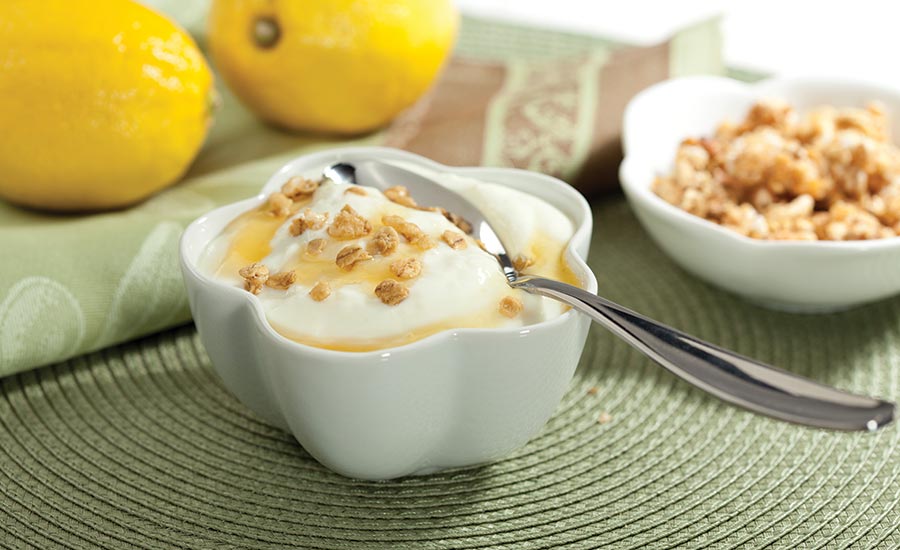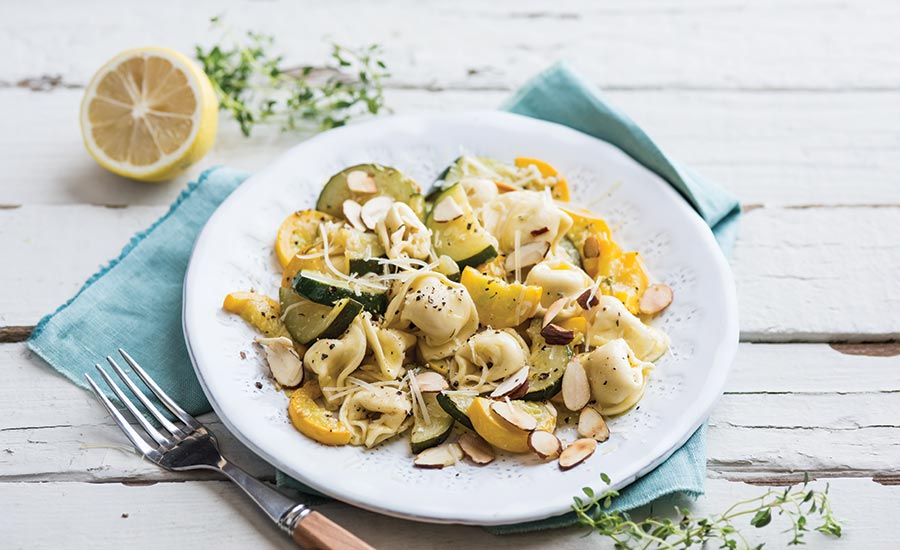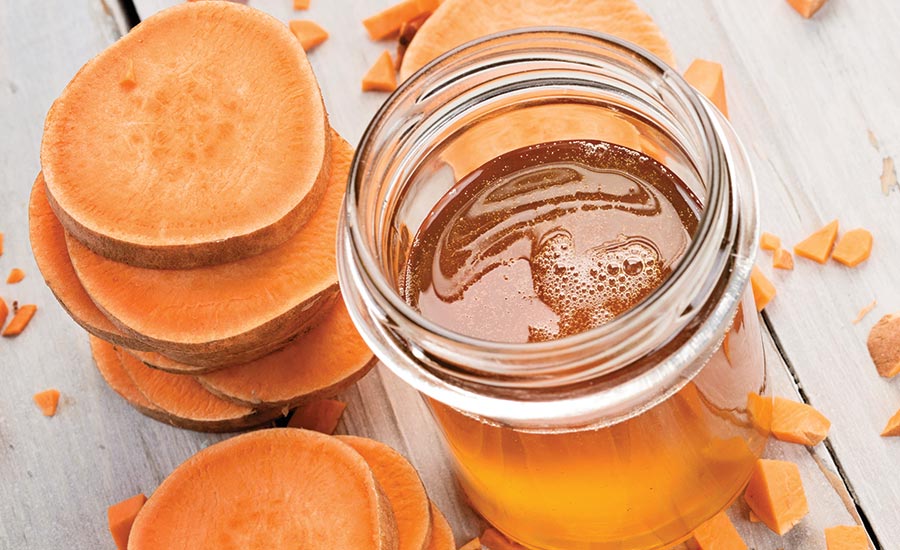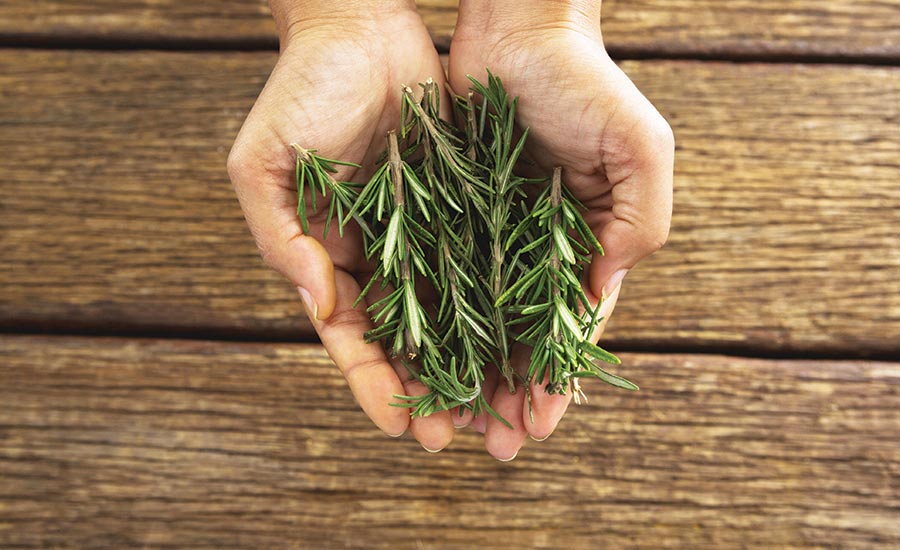“Clean label”—despite lacking a legal or commonly accepted definition—is a wake-up call to the food industry to re-examine ingredients, formulations, and processing for contemporary consumers who are increasingly mindful of their food and beverage choices.
Clean label is a catch-all term for a panoply of label claims such as “all natural”, “minimally processed,” and “non-GMO,” that also lack legal definition. The most obvious aspect of clean label is reducing the number of ingredients, particularly ingredients with long, unidentifiable, or difficult-to-pronounce names; those perceived to be artificial or synthetic; and those that serve no obvious nutritional or functional benefit.
Clean label has rapidly evolved as the de facto standard in mainstream foods. While it seems deceptively simple, it actually is quite complex, and unravels when one digs deeper. In short, the concept of “clean” is not based on scientific evidence, but on consumer perceptions and retailer positioning.
Table of Contents
ALDI Nord GmbH’s Trader Joe’s chain, The Kroger Co., and Whole Foods Market Inc. opted to shun selective food additives such as synthetic colors, preservatives, stabilizers, emulsifiers, and naturally occurring texturizers such as carrageenan (from seaweed) even though scientific literature reported that rigorous double-blind studies have not found evidence of these ingredients provoking true allergic reactions or health- or life-threatening reactions with prolonged use.
Lists of so-called “no-no” components direct manufacturers toward ingredients, formulations, and front-of-pack label claims to appeal to three consumer expectations: no food additives or synthetics; ingredients listed with commonly used names, without chemical or artificial implications (think “vitamin E” instead of “tocopherol” or “tocotrienol”); and minimal processing using traditional techniques that are not perceived as artificial.
While consumers are becoming increasingly familiar with the term “clean label,” most have no idea what it really constitutes. Several recent surveys have found that as many as eight out of 10 consumers do not know or understand what “clean label” means, yet the perceived “cleanliness” of foods and beverages across categories is litigated increasingly.
“While clean label is driving new product innovation, not to mention label redesign, the facts remain: foods generally sold in the US are, ipso facto, ‘clean,’ i.e., safe for consumption despite labeling not always being 100% ‘truthful and not misleading’,” says Christina Bechtold, CEO of Prime Label Consultants Inc. But a number of trends have emerged in conjunction with the clean label movement as opportunities for food makers to connect and resonate with their target audience.
See-Through
Simple and clean-sounding ingredients may evoke idyllic images of health and well-being, but they do not always deliver on those promises. For example, replacing inorganic nitrates with celery powder may make a product seem clean and safer, but celery powder contains a significant amount of naturally occurring nitrates. These do not need not be disclosed on a product label, which could pose a problem for those allergic to nitrates.

One of the biggest advances in clean label ingredient technology comes from the use of functional native starches replacing chemically modified starches.
SOURCE: Ingredion Inc. (www.ingredion.com)
Swapping consumer-friendly names for chemically altered, artificial, or otherwise controversial ingredients does not necessarily make the product healthier. In its purest form, clean label seeks to reduce fat, sugar, and salt—three of the most prevalent and sometimes overused ingredients in food and beverage processing.
However, fat, sugar, and salt have specific, hard-to-replace functionality in some food applications. They contribute to food safety and wholesomeness. Moreover, reducing and replacing those ingredients to make the food product truly “clean label” have potential negative impacts on other aspects of the formulation.
Sugar is probably the most demonized of ingredients, even more so than salt. But replacing sugar with seemingly healthier, clean-sounding alternatives—such as “evaporated cane juice”—to make products appear healthier and more natural is misleading. In this specific case, that’s because evaporated cane juice is merely sucrose by another name.
Replacing high fructose corn syrup (HFCS) with honey or agave offers few if any nutritional advantages. HFCS 42, which is commonly used commercially, is 58% glucose and 42% fructose. (Sucrose—table sugar—is 50% glucose and 50% fructose.) Honey averages 51% glucose and 49% fructose. Blue agave syrup is at least 60-75% fructose and can be as much as 97% percent fructose. This could pose a possible health risk to those suffering from fructose intolerance.
Free-from Philosophy
Cassandra Curtis and Ari Raz of Once Upon a Farm LLC revolutionized the baby food aisle by introducing cold-pressing and high-pressure processing (HPP) techniques instead of using preservatives. Baby food that requires refrigeration can be a challenge for some retailers, but this approach in processing has led to a new category. Yet, it has turned out to be a fast-growing trend favored for increasing the quality and variety of produce in the diets of babies.

Global food companies are taking clean label seriously, with giants like Nestlé SA using Société Générale de Surveillance to verify its Buitoni line of pasta products as non-GMO.
SOURCE: Nestlé SA/Buitoni Co.(www.buitoni.com)
Once Upon a Farm uses ingredients such as flax, chia, and hemp seeds that are not as common in baby foods. This is helping to shift the perception of baby food from cheap, shelf-stable, tasteless mush to fresh, higher-quality baby food that even adults will eat.
So-called “minimally processed” products may be touted as more nutritious because they have greater amounts of heat-sensitive nutrients and no chemical preservatives, but they also have higher microbial growth risk: HPP has a 5-log reduction vs a 12-log reduction for UHT/aseptically processed foods.
While HPP technology can help create seemingly “less processed” versions of juices, sauces, deli meats, and condiments, it is important to note that freeze-dried fruits and vegetables are not aseptic. It is important to check if clean-label dairy products and beverages need challenge testing and process validation to ensure safety.
Unintended Consequences
Underpinning the concept of clean label is simplicity, but clean is in the eye of the beholder. Clean can be a nightmare of a moving target for manufacturers at the whim of the consumer’s changing wish list. The elimination and replacement of ingredients regarded as redundant, unacceptable, unwholesome, or even harmful without sound scientific justification sets up multiple and often costly and unnecessary challenges.
Product re-formulators battle with quality and safety issues when replicating old favorites. Manufacturers struggle with profit margins and consistent supply, and consumers often have to reframe how they buy, store, and use the clean-label version of their old favorites. Transparency offers sensible stability to prevent floundering.

Corn is one of the largest GMO crops, but grain and seed ingredient companies are accelerating production of non-GMO sources to meet booming demand.
SOURCE: Bunge North America Inc.
Adopting a clean label alternative just to avoid the wrath of misinformed activists can readily backfire. The removal of carrageenan, mistakenly confused by a Chicago medical researcher with another derivative called poligeenan (which is not part of the food supply), has affected the bottom line of several food enterprises.
Gellan gum, oat fiber, citrus fiber, sunflower lecithin, and konjac (Asian yam) flour are popping up as replacements for the unfairly maligned carrageenan. All are good ingredients, but costly reformulation can be avoided if processors don’t fall prey to hysteria and act in haste.
Expectations of transparency often accompany the demand for clean and healthy ingredients. Providing consumers clear and understandable information is paramount to garnering their trust and preempting clouding by inaccurate and misleading information.
Without clarity, clean labeling risks losing its balance and benevolence and veering toward sensationalism and compounded consumer confusion. All of these factors hurt both the food industry and food regulators, ultimately hurting consumers as well.
Food manufacturers have been swapping out TBHQ and BHA for several years now. The chemicals had been used for decades to extend shelf-life by preserving color, flavor, and general age-related spoilage. Instead, processors are turning to naturally occurring antioxidants such as rosemary extract, licorice extract, green tea, and acerola extract. They also are increasingly using an old favorite, vitamin E (usually as mixed tocopherols).
The distinctive flavors of some of these replacements, however, might be off-putting in mild-tasting applications such as breakfast cereals, nutrition bars, and dairy foods. Moreover, higher dosages or even second applications might be needed to compensate for losses resulting from processes that subject the products to extended high temperatures. Blending antioxidants is one way to introduce synergy in stability and blunt the individual flavors for greater acceptability.

Natural non-GMO sweeteners such as from sweet potatoes, are not only versatile but have enhanced marketing appeal.
SOURCE: Carolina Innovative Food Ingredients Inc. (www.cifingredients.com)
The Color Equation
The color of foods and beverages is a prelude to nutrition and good taste, making color critical to product perception. Replacing synthetic ingredients with ones derived from plants, insects, and other animal products may appear “cleaner,” but natural does not necessarily mean safer.
Colors may be claimed as “natural,” but the FDA’s long-standing position is that any ingredient added with the intent to color a food, even if the ingredient itself is natural, is an “artificial color” and may have to be labeled as such (21 CFR 101.22(k)). Claims of “natural colors” raise red flags, as does the claim “no artificial colors” if a product contains any ingredient used as a colorant.
Fruit and vegetable powders and extracts have been turned into workhorses of replacements for azo dyes. Ingredients such as turmeric, beets, carrots, and even spirulina are popular, especially since they add health benefits with their distinct color.
Caramelized sugar, turmeric root powder, and apple juice powder are stepping in as cleaner replacements for caramel color in a number of food and beverage applications, too. However, care must be used here. For example, some cases of acute allergic reactions were reported to occur with yellow annatto colorant made from achiote seeds.
Stick Together
Emulsifiers such as mono-and di-glycerides are ubiquitous ingredients in food manufacturing because of their range of functionalities for structure and texture. They keep oil and water together in foods such as salad dressing and mayonnaise; they enhance whipability of batters and are used as dough conditioners.
Emulsifiers also support the volume and crumb texture in breads and help pasta survive overcooking. In addition, emulsifiers maintain quality and freshness of bread and cakes, extend shelflife of baked goods and low-fat spreads, and are used as release agents in baking. Flours of flaxseed, chia seed, and tiger nut—as-is or hydrated—are emerging as naturally safer and more appealing replacements for mono- and diglycerides.

The key to successful clean-label shelflife extension with natural extracts, such as from rosemary, is in incorporating specific grades for specific challenges.
SOURCE: PLT Health Solutions Inc. (www.plthealth.com)
“The vegan food sector has a number of foods using naturally occurring emulsifiers,” says LuAnn Williams, director of innovation for Innova Market Insights. “These include plant-based milk alternatives, cheese alternatives, mayonnaise analogs, and sausage analogs. This class of products is expected to grow even more. ‘Mindful choices’ is the number one trend all over the world, and clean label is a subset of this global trend.”
Rice dextrin, fruit juices, and date, fig, and prune pastes are stepping in as replacement ingredients for glycerin, used as a humectant and a carrier of flavors. These choices have varying degrees of humectant functionality, but have been used successfully in baked goods, extruded bars, and pet foods.
Tackling Demands
Requirements for complicated customizations come with supply chain challenges. These include the lack of a simple definition for conveying those customizations up the value chain, making it increasingly difficult to align expectations with needs.
How a processor engages its suppliers is critical to its success in driving clean-label projects across the business. Clean-label ingredients also can be more expensive than their conventional counterparts, and companies must have procedures in place to ensure the integrity of the supply chain.
The concept of clean label is disrupting some food categories and supply chains. There has not been a consistent price premium across all categories for higher cost clean-label ingredients. Therefore, cost differentials must be compensated by marketing and claims wherever possible.
Buyers must confirm supply of clean-label ingredients. Also, scale-up is not easy for many, especially smaller suppliers. Check sophistication and reliability of suppliers. Longer supply chains mean greater costs and lead time; availability issues with just one ingredient can delay a product’s launch. Sustainability implications of organic and non-GMO ingredients are not always consistent.

The complicated formulations in baked items call for extra attention to ingredient interactions in creating clean-label products.
SOURCE: Holton Food Products Inc. (www.holtonfp.com)
Check the numbers to ensure they are real. For R&D, it is important to communicate price differentials in reformulations for cost/benefit analysis to finance and manufacturing for a systems-wide check as to whether the clean-label version is really needed and valued by the marketplace.
R&D departments also have to deal with the paucity of technical and product development expertise for formulating with alternatives. Formulation and processing clean-label gluten-free and wheat-free mixes with smaller grains and transitional crops like flax, oats, and legumes can be constraining to both supply and processing.
Preservatives such as potassium sorbate and sodium benzoate have long been used to inhibit yeast and mold in a range of beverages and baked, high-moisture extruded foods. These finished products now can be effectively protected by cultures of whey, rice, sugars, and seeds, but there are two caveats. Chemical preservatives are consistent, whereas botanicals and culture-based preservatives vary by batch. Also, the latter might not have not been through the rigors of food-additive testing.
Products made without chemical preservatives might also require a second intervention, such as refrigeration. This is to avoid growth of yeasts and molds that can shift pH and drive spoilage. In addition to specifying how the clean-label version must be handled and stored, developers must check the impact of shelflife and storage on sensory and quality aspects. Consumer and customer education might also be required. Clean-label products are not always as robust as their conventional counterparts.
It is important, as well, to ensure that such clean-label preservatives do not interact with other ingredients in the formulation and affect the appearance or taste of the finished product. Consulting with the ingredient supplier is always recommended before undertaking any major reformulation.
The Sustainability Question
Along with the reduction in the number of “less-desirable” ingredients, or the removal of such ingredients entirely where possible, comes the question of sustainability. Which is more sustainable? Using acres of land, water, and energy to grow plants that produce minuscule quantities of natural flavors, sweeteners, or phytonutrients? Or is it better to produce them via fermentation processes, using yeast or other microorganisms that have been engineered to produce them a thousand times more efficiently?
Keeping Track
Traceability is touted as the “cleanness” by a number of food companies. Clean label is not just about what’s declared about the ingredients on the labels but also about hidden contamination with heavy metals and pesticide residues, which can be a health hazard for certain food categories, such as baby food and performance foods.
Plant proteins are gaining ground as a destination ingredient in numerous food and beverage applications. While consumers reach out for proteins derived for potatoes, peas, rice, brown rice, sprouted rice, lentils, and even coconut for their health benefits, consumers in California have to deal with Proposition 65 warnings in some cases because of higher levels of lead, cadmium, and arsenic taken up from the environment through both natural and anthropogenic sources.
The California Office of Environmental Health Hazard Assessment (OEHHA) recently proposed levels of inorganic arsenic in rice that “occurs naturally” and thus are exempt from the Proposition 65 warning requirement. This is the first time in 25 years that OEHHA has put forth a naturally occurring exemption.
Silicon dioxide (silica), an anti-caking flow agent used in spices and seasonings, can be replaced by rice hull and rice extracts. This is especially effective for replacing those silica ingredients that are often used in processing flour and starch ingredients.
Don’t Bug Me
Pesticide residues are an emerging issue in the clean-label debate.
“Companies might be unaware that a number of unwanted chemicals are in their products,” says Jackie Bowen, managing director at The Clean Label Project, a non-profit organization advocating product transparency. “Many of these ingredients are not routinely tested.”
Looking at the recent and growing concern over the herbicide glyphosate, a number of complaints were filed against Post Holdings Inc./Post Foods, General Mills Inc., and the Quaker Oats Co. The complaints were that these companies claimed their products were “100% natural” when each contained varying levels of glyphosate.
Non-glyphosate certification is appearing on the radar of several packaged food makers in light of the chemical being seriously considered for addition to the list of chemicals in California’s Prop 65 legislation. This is a concern for most manufacturers of grain-based foods.
Names Matter
The market is specifically focusing on artificial ingredients that also have chemical-sounding names. The law regulates artificial food ingredients in terms of their standards of identity and their conditions of use to protect consumer welfare and ensure a level playing field.
Ingredient names, and especially consumer familiarity and acceptance of these names, play a central role in the clean-label landscape. Chemical-sounding and difficult-to-pronounce unfamiliar names lead to perceptions of higher risk and raise questions about the reason for their use in foods.
As with carrageenan and tocopherol, some ingredients that are demonized because they have complex chemical names compound the negative image because they also are used in industrial applications. Brominated vegetable oil is an example of recent vintage. It was hastily removed from citrus soda and sports drinks because it is also used in flame retardants. (See, “Dihydrogen Monoxide: Is it Safe for Food?”.)
Another case in point is cellulose, specifically methylcellulose, hydroxypropyl methylcellulose, and cellulose gum. These ingredients are favored in foods for their binding, heat-setting, foaming, and stabilizing properties. Cellulose is a naturally occurring plant fiber and one of the most common ingredients in nature. It is therefore a renewable resource with a long history of safe use.
Cellulose also has approved health claims, is perfectly safe and nutritious, and offers unique health benefits for consumers. Cellulose ingredients are excellent for formulations seeking egg-free, vegetarian/vegan, gluten-free, and fat-free/low-fat status. In most cases, there is no slam-dunk single replacement among naturally occurring ingredients.
The generic term “artificial flavor” is best avoided on a clean label. In some cases, even “natural flavors” could raise concern, implying something is being hidden from the consumer. A better tactic is to take advantage, whenever possible, of the origin with “real” ingredient names, such as “derived from cinnamon” or “from coconuts” or other flavor-evoking ingredients.
“Fresh” is a potential clean-label claim that is defined and regulated by FDA. A “fresh” claim, according to rule 21 CFR 101.95, “suggests or implies that the food is unprocessed, means that the food is in its raw state, and has not been frozen or subjected to any form of thermal processing or any other form of preservation.”
Big Bad Wolf
By J. Patricia Kim
When “Big Food” became “bad food,” clean label grew from trend to consumer norm very quickly and has dramatically influenced the way companies market and sell foods and dietary supplements. Like all undefined terms, “clean label” can mean one thing to the companies that make foods and dietary supplements and another thing to consumers.
It’s fair to say that both sides consider clean labels as having grown out of the need for transparency in what ingredients are used to make a food or dietary supplement. Generally, it’s understood to mean minimally processed, no artificial ingredients, non-GMO, fair trade/ethically sourced, and no chemical sounding names.
For dietary supplements, it also means not hiding behind the use of a proprietary ingredient list and disclosing the amounts of nutrients. To keep themselves out of controversy, companies would do well to define what they mean by “clean label,” using it consistently throughout their marketing efforts and informing their consumers of their clean-label self-definition.
One thing is certain, clean label is not going away, and the clean-label impact has changed, for the better, the way foods and dietary supplements are formulated, marketed, and labeled.
J. Patricia Kim is general counsel and vice-president of regulatory affairs for Swanson Health Products Co. (www.swansonvitamins.com)
Originally appeared in the January, 2018 issue of Prepared Foods as Keep It Clean.

